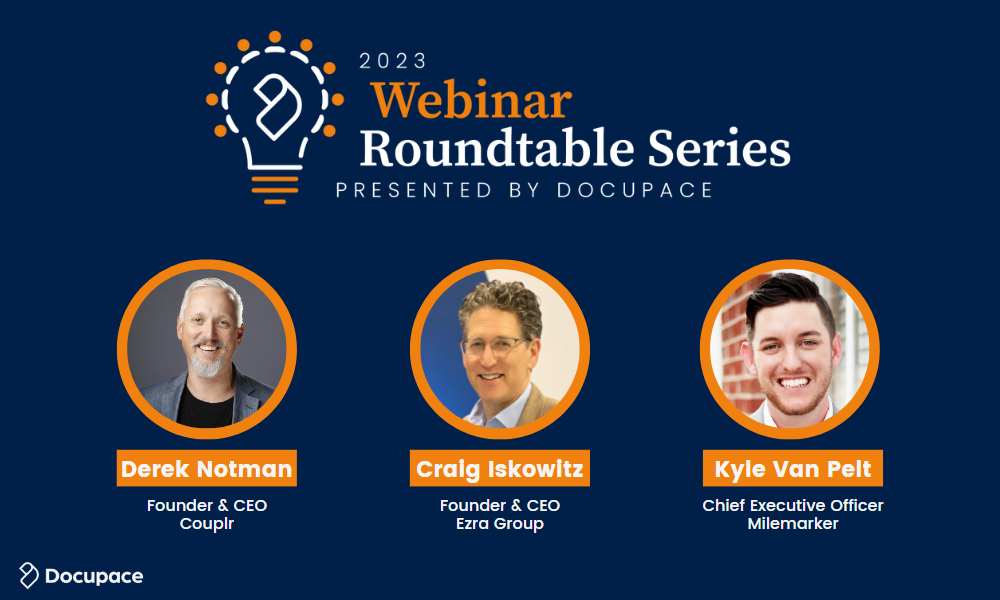Technology has the potential to unlock, empower and enable wealth management firms (large and small) to move faster and grow bigger. So why are so many organizations still stagnant? It’s a simple answer according to industry experts: they aren’t technologically integrated enough.
This is just one of the many insights gleaned from Docupace’s recent Authoritative Voices on Advisor Technology webinar, which featured panelists Craig Iskowitz, founder and CEO of Ezra Group, Derek Notman, founder and CEO of Couplr, and Kyle Van Pelt, CEO of Milemarker. The purpose of the webinar was, in part, to identify the telltale signs of success evidenced by firms succeeding at advisor technology deployments.
While the virtual roundtable touched on several factors contributing to an institution’s ability to utilize tech effectively, integration was the most prominent. Integration is one of the most important aspects of advisor technology that wealth management firms should focus on today. Here are three things firms should know when evaluating their integration needs.
Take Baby Steps Towards Integration
Integration is the process of incorporating multiple technology tools and systems into different areas of an organization to improve efficiency, communication, and performance. In a wealth management context, this may include digital tools like portfolio management systems, financial planning software, and communication platforms for interacting with clients.
Some platforms allow for out-of-the-box or custom integrations to be set up between previously disparate systems, while others offer more of an all-in-one solution. In general, though, merging financial advisement, customer relationship management, and marketing tools into one holistic process offers increased visibility into client needs and potential problem areas for the organization.
Technology is supposed to make firms more efficient, but it will only be as efficient as your understanding and strategy to implement that technology. Firms should look honestly at their existing tech stacks and determine the level of integration they need. Although the ideal scenario might be to eventually house all client-relevant processes within one integrated network, a better short-term plan could start with bringing together the most business-critical and time-intensive systems first. Even tiny steps toward tech integration are steps in the right direction.
How Clients Benefit from A More Integrated Wealth Management Firm
Data from an online survey shows that technology integration is a top priority for many wealth management firms today, and for good reason. In the fintech world, integration is critical because it allows institutions and advisors to access and analyze a wide range of financial data from various sources in one place. This can improve the efficiency and accuracy of the financial planning and investment decision-making process.
For instance, integration with portfolio management and trading platforms allows financial advisors to quickly execute investment strategies and make trades on behalf of their clients. Likewise, integration with accounting and tax software can make it easier for advisors to manage clients’ finances, prepare tax returns, keep accounts secure, and provide financial planning services.
Technology integration can also give customers an overview of their financial health and, thus, a heightened sense of control over their financial future. Oftentimes, clients who seek out wealth management services merely lack the scope and resources they need to exercise financial autonomy.
By integrating different financial accounts, such as bank accounts, investment accounts, credit card accounts, and loans, into one platform, wealth managers can provide their clients with a complete picture of their financial situation, which helps them make better-informed investment decisions.
Evaluate How Well New Systems Can Integrate
The process of integrating your firm’s tech stack has benefits and challenges. On one hand, integration can effectively streamline operations and ensure that all tools are running smoothly. That said, it often requires robust security measures to ensure the integrity of sensitive financial data.
Additionally, some fintech platform integrations can over-promise and under-deliver. While a truly effective integration process typically includes multiple moving pieces and a complex operational system, other self-professed all-inclusive platforms tend to be single sign-ons without transmitting real data between applications.
With integrated tools, wealth management firms can be more deliberate when choosing which technologies to adopt and which to avoid. For instance, a tool like Docupace is likely to have a much higher Wealth Tech Integration Score than other systems, therefore offering a higher chance of effective integration.
At the end of the day, success doesn’t necessarily come down to the technology itself but rather how a firm chooses to integrate that technology. Strategic adoption and technology integration can set a firm up for long-term success.
For more information on how Docupace could fit into your firm’s current tech stack, contact us here.




